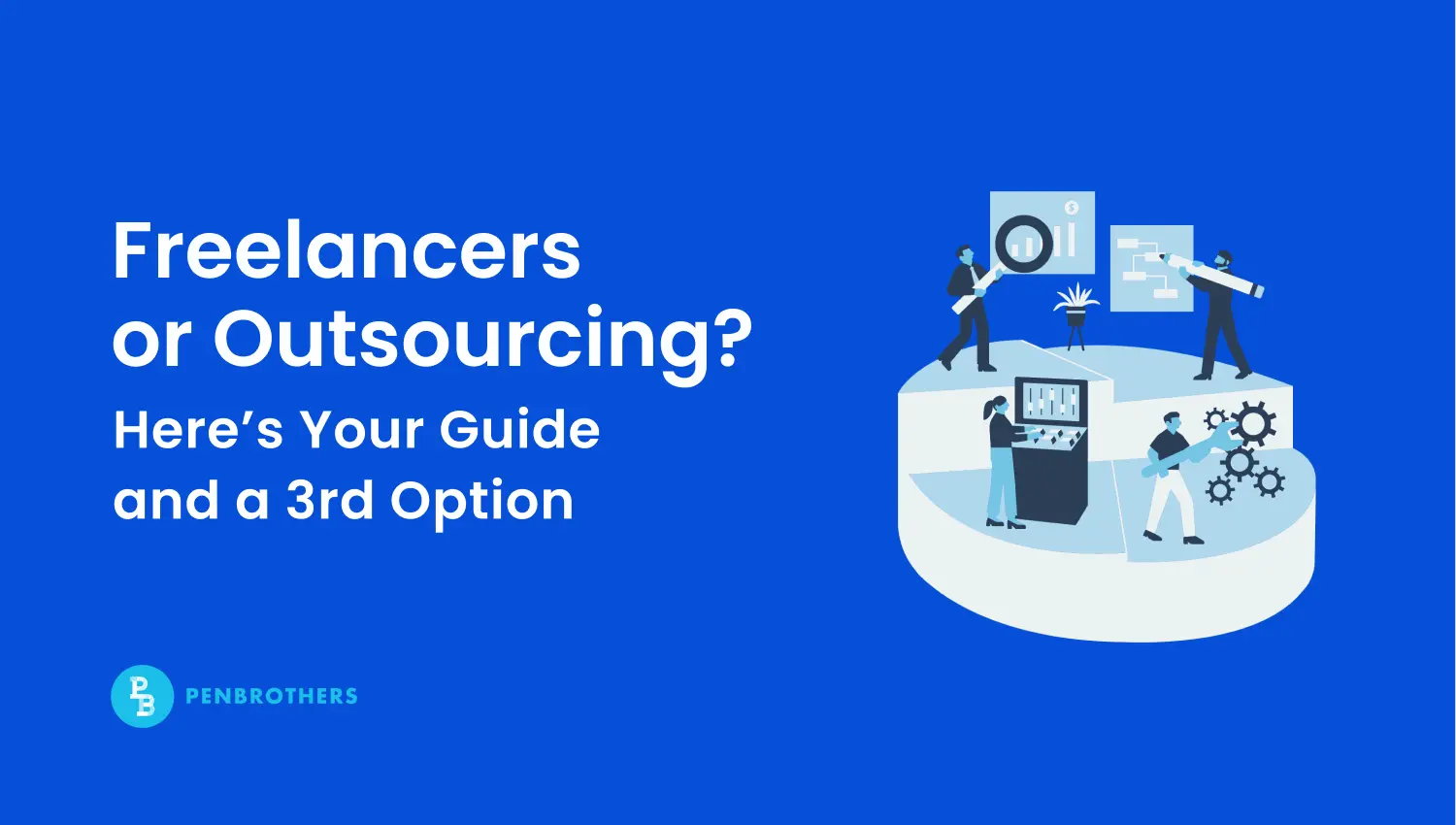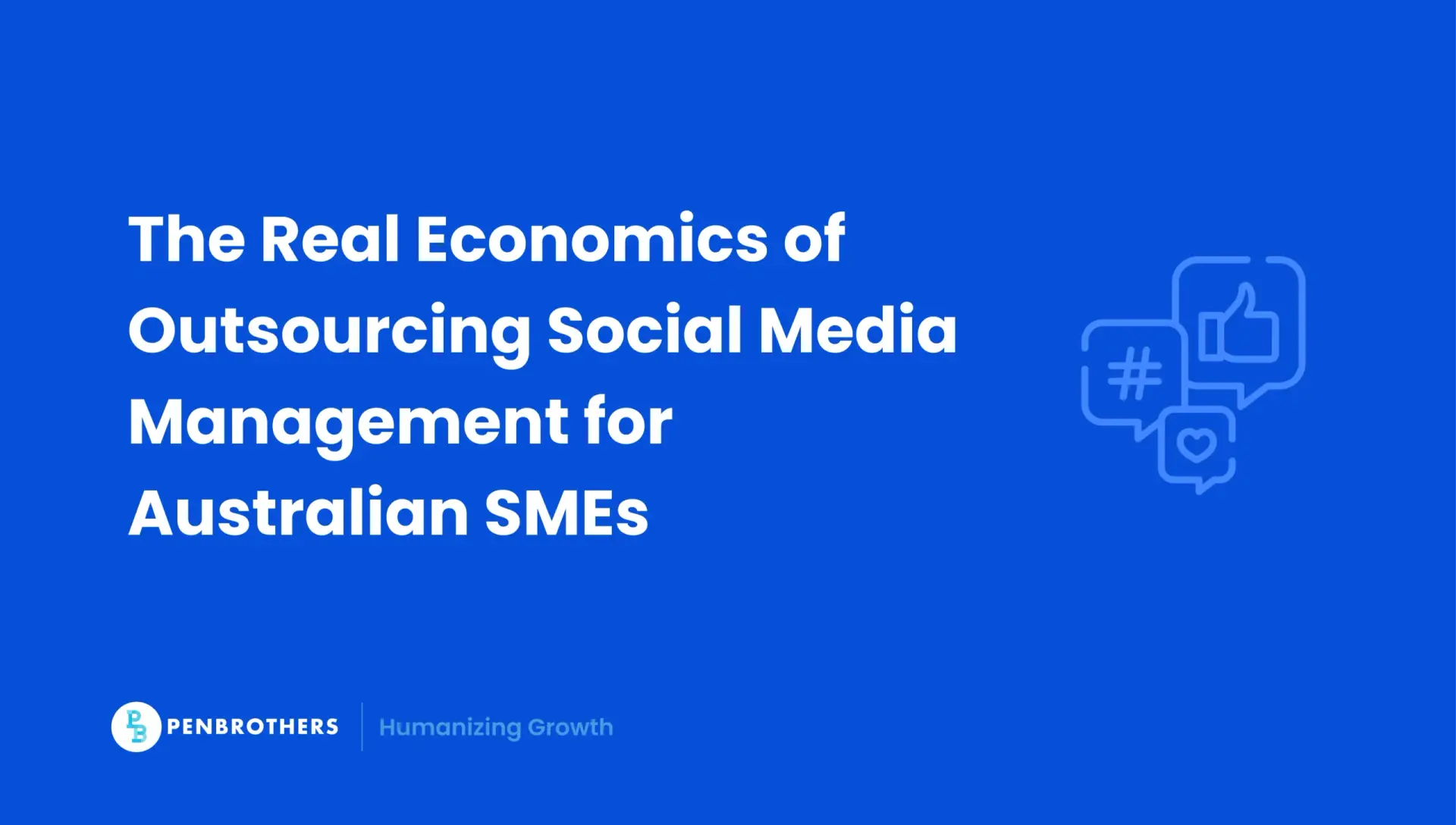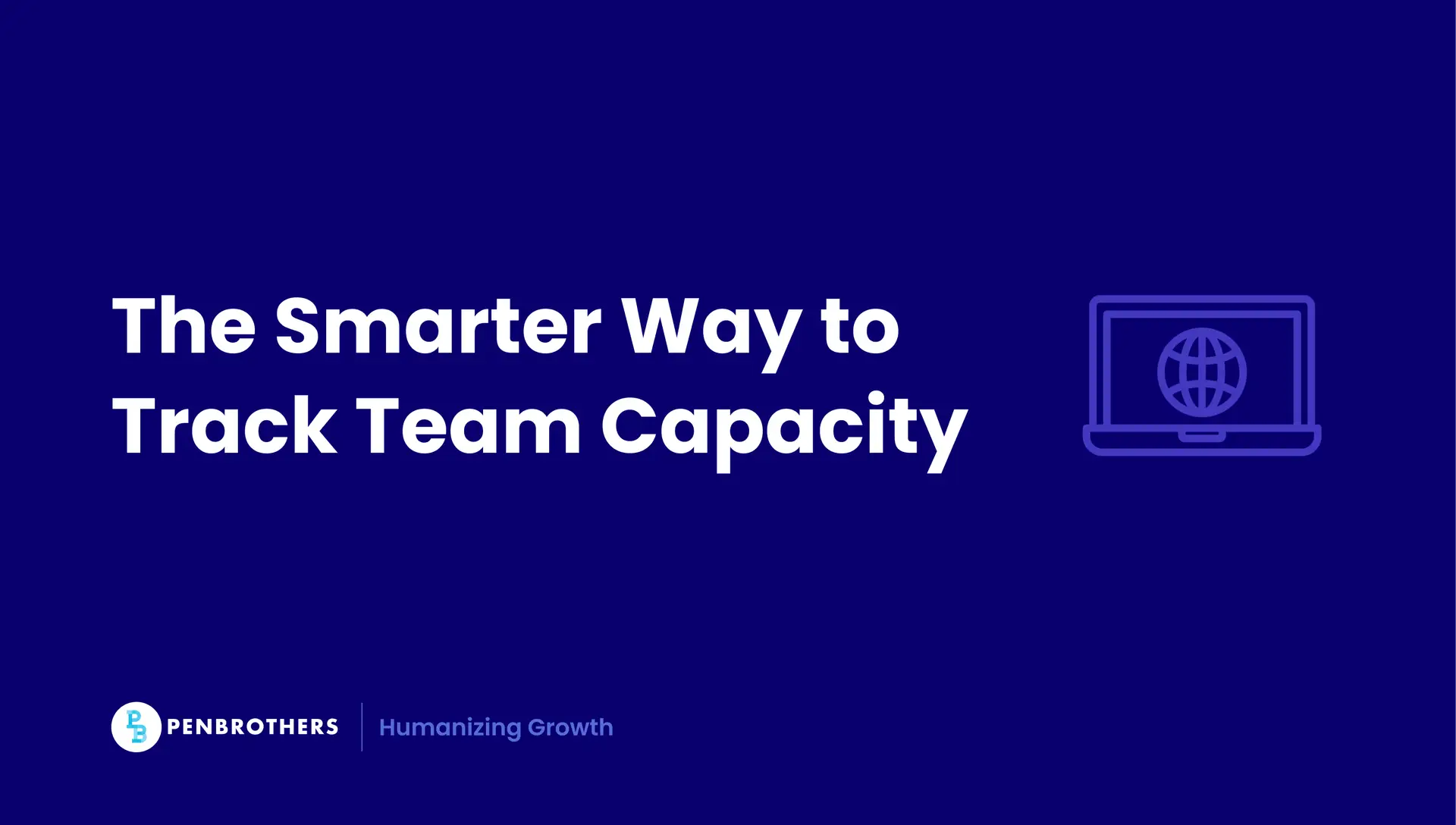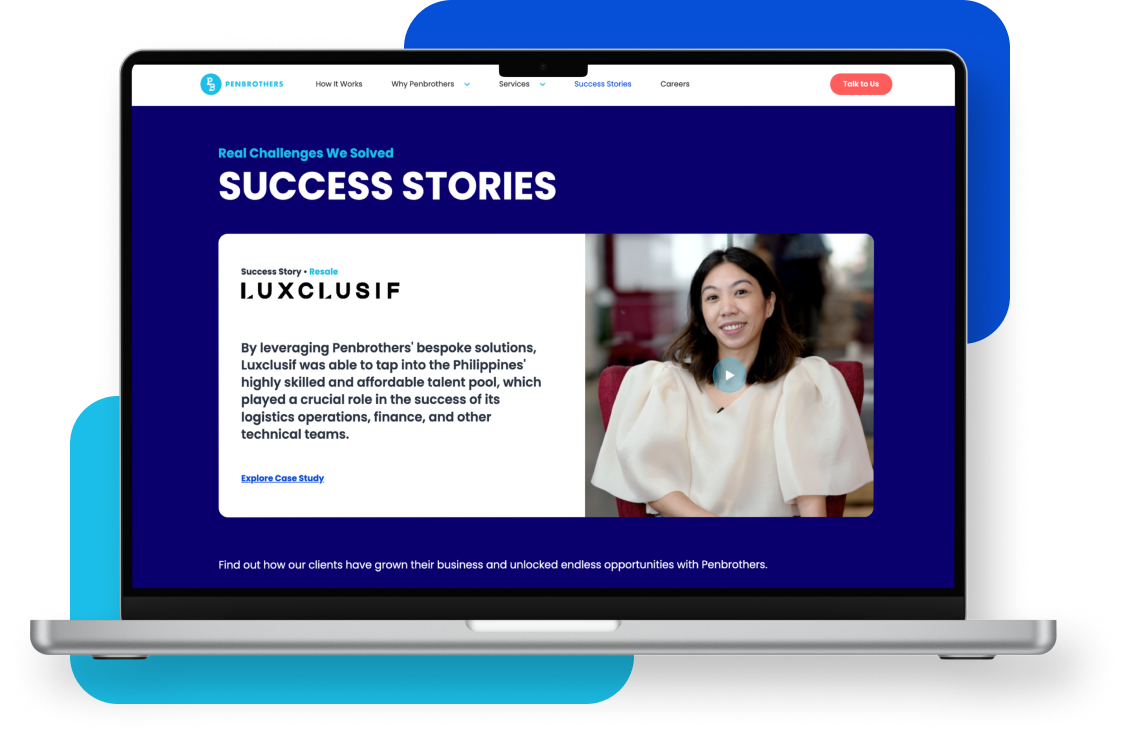What's Inside?
16 Proven DEI Strategies for the Workplace
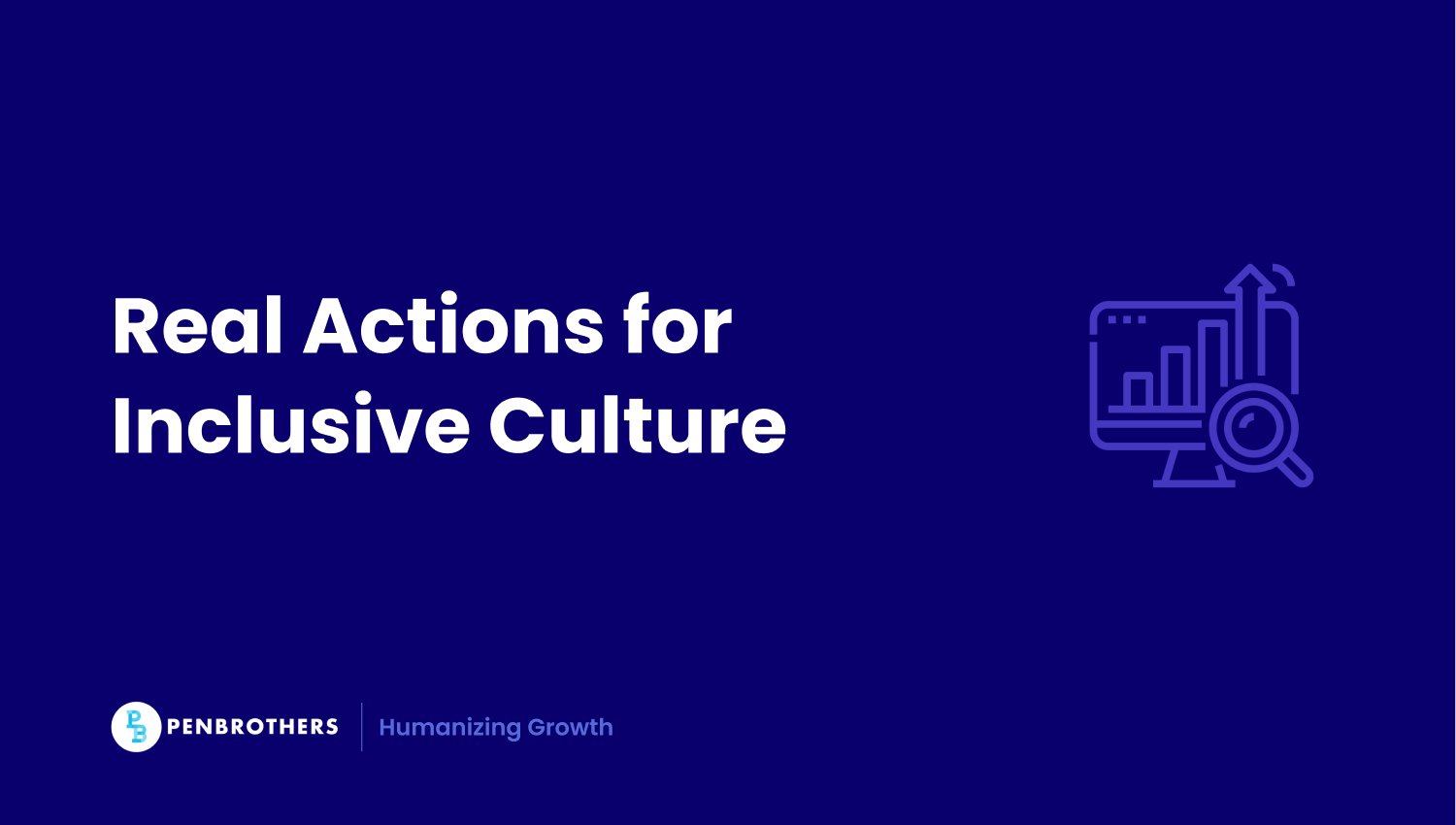
Diversity, Equity, and Inclusion (DEI) has moved beyond being a corporate buzzword. It’s now a global business imperative. Companies across industries are realizing that inclusive teams innovate faster. Retention improves. Culture strengthens.
According to McKinsey, companies in the top quartile for ethnic and cultural diversity on executive teams are 36% more likely to outperform their peers on profitability. That kind of edge matters. And in today’s hybrid, borderless workforce, DEI isn’t optional—it’s expected.
At Penbrothers, we help global companies build offshore teams in the Philippines that thrive on diversity and inclusion.
Here are 16 proven DEI strategies that work—onshore or offshore, startup or enterprise.
Embed DEI in Leadership and Culture
1. Model Inclusion at the Top
DEI starts—and either succeeds or fails—with leadership.
When executives and senior managers demonstrate inclusive behaviors, it sends a powerful message throughout the organization: This isn’t just HR’s job; it’s a leadership responsibility.
But what does that actually look like?
Practical Tips:
- Lead by example in communication. Use inclusive language, share your pronouns, and correct exclusionary terms when you hear them in meetings.
- Talk openly about mental health. Normalize checking in on well-being and be transparent (as much as you’re comfortable) about your own challenges or boundaries.
- Respect different working styles. Avoid one-size-fits-all management. Leaders should understand that employees may need different communication styles, schedules, or modes of participation.
- Acknowledge mistakes. If you misstep (e.g., misgender someone or interrupt a junior employee), apologize and model growth. This builds psychological safety.
- Attend DEI trainings. Don’t just send teams—show up, participate, and actively support follow-through.
In offshore teams, particularly in high-context cultures, hierarchical behavior can make junior staff hesitant to speak up. Leaders must actively dismantle that barrier by being approachable, consistent, and human. Explore how leadership and DEI shape the future of work.
2. Make DEI Visible in Your Values
Too many companies have beautifully worded values that sit idle on a careers page.
To embed DEI, your values must translate into decisions, systems, and daily behaviors—especially in how you hire, partner, reward, and lead.
Practical Tips:
- Codify values into performance reviews. Include DEI behaviors as a metric in leadership evaluations—e.g., how well managers build diverse teams or include quieter voices.
- Audit your policies. Are your parental leave, dress code, or holiday policies inclusive of different identities and beliefs? Update them to match your stated values.
- Embed DEI in job descriptions. Go beyond saying “we’re an equal opportunity employer.” State your DEI goals clearly, e.g., “We actively seek to build a team that reflects global perspectives.”
- Be selective with vendors. Choose suppliers or partners who align with your DEI standards. Add inclusivity questions to your procurement process.
- Celebrate milestones. Highlight inclusive achievements internally and externally—e.g., gender pay equity, diverse promotions, or ERG impact.
Employees know when DEI is performative. But they also recognize when it’s woven into the fabric of leadership and culture—and that’s when it starts to truly work. Check out how our core values shape our work at Penbrothers.”
Build Inclusive Communication Practices
3. Use Inclusive Language
Language frames culture. It either includes or excludes—often without us realizing it.
Terms like “manpower,” “guys,” “chairman,” or even “cultural fit” may seem harmless but can subtly reinforce outdated norms and stereotypes.
Practical Tips:
- Create an internal inclusive language guide. Offer alternatives like “workforce,” “everyone,” “chairperson,”and “culture add.” Keep it live and evolving.
- Integrate language checks in copy reviews. Have your content, marketing, and HR teams flag gendered or biased terms before they go out.
- Avoid assumptions in communication. Don’t presume someone’s pronouns, background, or holiday schedule—always ask, don’t guess.
- Localize without stereotyping. If you’re working with Filipino teams, avoid token references or “Filipinization” that feels superficial. Inclusion is about respect, not exoticism.
- Train managers on microaggressions. Subtle language like “you speak good English” or “you’re very assertive—for a woman” can be incredibly harmful.
Start by simply asking: Who might feel excluded by the way we say this?
4. Normalize DEI Conversations
One-off workshops aren’t enough. For DEI to work, it needs to be part of the everyday rhythm of the organization.
DEI conversations shouldn’t only surface during annual performance reviews or Black History Month. They should happen in real time, in real teams, with real outcomes.
Practical Tips:
- Add DEI wins or learnings to team meetings. Open standups or town halls with a DEI-related highlight or reflection from the week.
- Embed DEI in onboarding. Introduce your company’s DEI commitments on Day 1, not buried in an optional HR deck.
- Celebrate cultural dates meaningfully. Don’t just post on social—host internal learning sessions, interviews, or spotlight employees’ personal stories.
- Encourage team leads to ask reflective questions. Example: “Whose voice hasn’t been heard on this?” or “How might this policy affect parents or caregivers?”
- Practice humility. Make it safe to say, “I don’t know, but I’d like to learn.” That openness invites others to speak up too.
This shift isn’t about creating conflict. It’s about creating clarity—and connection.
5. Encourage Feedback Loops
In many cultures, employees are trained to avoid confrontation and prioritize harmony. That can stifle honest feedback, especially when it relates to bias or exclusion.
If you want to truly understand how inclusive your workplace feels, you have to intentionally lower the barrier to feedback.
Practical Tips:
- Use anonymous pulse surveys. Ask direct, non-threatening questions like: “Do you feel comfortable being yourself at work?” or “Have you experienced or witnessed bias?”
- Make feedback channels visible. Place them on your intranet, Slack, or even physical posters for onsite teams.
- Follow through on what’s shared. Feedback is only as useful as the action it sparks. Publicly summarize survey findings and next steps (while protecting anonymity).
- Offer multiple formats. In cultures where face-to-face feedback is intimidating, provide QR code surveys, digital suggestion boxes, or opt-in 1-on-1s with DEI advocates.
- Train managers to receive hard feedback. The goal isn’t to be defensive—it’s to be effective.
Rethink Hiring and Talent Development
6. Think Beyond the Degree
In many organizations, academic pedigree is still overemphasized.
But a resume from a top-tier university doesn’t guarantee adaptability, emotional intelligence, or problem-solving under pressure. In the Philippine talent market, some of the most resilient, skilled professionals come from non-traditional educational paths—vocational schools, provincial universities, or self-taught backgrounds.
Practical Tips:
- Remove unnecessary degree requirements. For roles like customer success, content creation, or project coordination, ask: “Is a college diploma truly essential?”
- Screen for competencies, not credentials. Use scenario-based questions or skills assessments instead of GPA cut-offs.
- Acknowledge lived experience. A candidate who balanced a freelance career while caregiving may bring more agility than someone with a straight-line corporate background.
- Train hiring teams to unlearn biases. Equating “UP, Ateneo, La Salle” with “top talent” is common—but exclusionary.
- Share success stories. Highlight diverse employee journeys in internal comms and employer branding to shift mindsets from prestige to potential.
Talent is everywhere. Opportunity isn’t. Change that.
7. Rewrite Job Ads and Careers Pages
The language you use in job listings doesn’t just describe roles—it filters who applies.
Words like “ninja,” “dominant,” or “rockstar” may sound catchy, but they subtly discourage women and underrepresented groups. Similarly, a careers page with only white male executives or hyper-Western references can feel alienating to global applicants.
Practical Tips:
- Run your job ads through a bias detection tool. Tools like Textio, Gender Decoder, or Datapeople can flag masculine-coded or exclusionary language.
- Use clear, plain English. Avoid jargon-heavy or corporate lingo that might alienate Gen Z or non-native English speakers.
- Highlight your DEI commitment. Mention flexible work, inclusive benefits, or diverse mentorship programs explicitly—not just in a values section.
- Refresh your visuals. Ensure your careers page reflects real diversity—age, ethnicity, body types, gender identity, disability inclusion, etc.
- Balance ambition with accessibility. Don’t stack 10 “must-have” requirements. Label true essentials vs. nice-to-haves.
Transparency attracts authenticity. And authenticity attracts great hires.
8. Standardize Interviews
Unstructured interviews—where hiring managers “go with their gut”—are breeding grounds for bias.
Studies show that people tend to hire those who are like them, which unintentionally sidelines diverse candidates. Structured interviews reduce that risk and improve decision quality.
According to Harvard Business Review, structured interviews are significantly more predictive of job performance than informal ones.
Practical Tips:
- Develop interview scorecards. Evaluate all candidates against the same core competencies and behavioral indicators.
- Rotate interview panels. Avoid having one dominant interviewer. Include diverse panel members when possible.
- Use scenario-based questions. Ask about how candidates handled conflict, change, or ethical dilemmas—not just “Tell me about yourself.”
- Record patterns. Debrief after each interview. Are you consistently favoring outgoing personalities over thoughtful ones? Adjust.
- Train interviewers. Provide DEI-focused interview training at least twice a year—especially for hiring managers.
Hiring shouldn’t feel like speed dating. It should feel like mutual discovery—with fairness at the center.
Create Structures That Support Equity
9. Offer Flexible Holidays and Work Setups
A global team requires global sensitivity. Western-centric holiday calendars don’t work for everyone—especially in culturally diverse countries like the Philippines.
Practical Tips:
- Implement floating holidays. Let employees choose which public holidays they observe—whether it’s Eid al-Fitr, Lunar New Year, or Undas (All Souls’ Day).
- Localize your holiday calendar. For Philippine teams, incorporate local observances and communicate them clearly to global managers.
- Offer remote/hybrid flexibility. Recognize that some may need quiet spaces to observe religious rites or caregiving duties at home.
- Avoid scheduling critical meetings on religious holidays. Use global holiday tools (like TimeandDate or DEI calendars) to stay informed.
- Respect time zones. For global orgs, avoid scheduling meetings that favor one region’s 9-to-5 at the expense of another’s sleep or family time.
Equity in time is just as vital as equity in pay. Here’s a guide to Philippine holidays your team should know.
10. Customize Rewards and Workspaces
One-size-fits-all rewards programs often miss the mark. What motivates a young urban digital nomad might not work for a parent in Cavite or an introvert in Cebu.
Practical Tips:
- Give employees benefit bundles. Allow team members to choose from a menu: mental health allowances, ergonomic home office setups, transportation subsidies, or grocery support.
- Offer inclusive rewards. Replace alcohol-focused social incentives (e.g., wine nights) with more inclusive options like wellness retreats, online learning credits, or family-friendly activities.
- Customize workspace support. Some team members need noise-canceling headsets; others might need an adjustable chair or better internet. Ask, don’t assume.
- Use surveys to inform preferences. Before designing perks, ask your people what they want—especially when managing teams across locations and income levels.
Inclusion isn’t about providing more. It’s about providing what matters most to each person.
11. Run Pay Equity Audits
Salary disparities—especially those based on gender, ethnicity, or role visibility—are among the most persistent DEI challenges. Addressing them isn’t just ethical—it’s good business.
According to Great Place to Work, companies that proactively address pay equity are 5.4 times more likely to retain top talent.
Practical Tips:
- Run annual compensation audits. Break down salaries by role, gender, tenure, location, and ethnicity to detect unexplained gaps.
- Set transparent pay bands. Show employees the salary ranges for their roles and what’s required to move up.
- Audit offshore compensation structures. At Penbrothers, we often help clients ensure their Philippine-based teams are paid fairly based on both local market rates and contribution value—not geographic discounting.
- Include performance equity. Equity is not just about salary—it’s also about promotions, recognition, and leadership opportunities.
- Report progress regularly. Even if you’re not yet where you want to be, sharing your progress signals accountability and builds trust.
If you’re not measuring pay equity, you’re guessing. And people know when they’re undervalued.
Sustain DEI Through Infrastructure
12. Empower Employee Resource Groups (ERGs)
Employee Resource Groups (ERGs) are voluntary, employee-led communities that bring together people with shared identities or interests—be it gender, ethnicity, LGBTQIA+, neurodiversity, or working parents.
They are safe spaces that drive connection, learning, and advocacy from within the organization.
Practical Tips:
- Form ERGs by interest or identity. Let employees self-organize based on what matters to them—don’t dictate the format.
- Offer executive sponsorship. Assign senior leaders as ERG allies to help elevate insights, unblock resources, and signal buy-in.
- Fund ERG activities. Allocate budgets for workshops, events, guest speakers, or wellness initiatives. Support, don’t control.
- Include ERG feedback in decision-making. Invite ERG reps into policy reviews, DEI reporting, and leadership forums.
- Make ERGs accessible across locations. For offshore teams, ensure time zones and technology don’t exclude participation.
13. Pair Mentors and Sponsors
There’s a difference between mentorship and sponsorship.
- Mentorship is about sharing wisdom and skills.
- Sponsorship is about advocacy—putting your name on the line for someone else’s growth.
Underrepresented talent needs both.
Practical Tips:
- Create formal mentoring programs. Match senior leaders with high-potential employees from diverse backgrounds. Make the structure clear, but keep the relationships personal.
- Encourage sponsors to advocate publicly. Invite them to nominate their mentees for stretch projects, leadership programs, or promotions.
- Recognize and reward inclusive leadership. Include mentoring and sponsorship contributions in performance reviews and bonuses.
- Include cross-border mentoring. For offshore teams, connect Philippine-based talent with mentors in HQ or other markets to bridge opportunity gaps.
- Use tech to support connections. Platforms like Together, MentorcliQ, or even Slack channels can facilitate consistent interactions.
Great careers don’t grow in isolation—they grow with champions.
14. Assign a DEI Budget
If your DEI strategy has no funding, it has no future.
You can’t run training, build inclusive hiring tools, or support ERGs on goodwill alone. Budgeting DEI proves that it’s a core business function—not a side project.
According to Deloitte, companies that invest in inclusive leadership development are twice as likely to meet or exceed financial targets.
Practical Tips:
- Build a standalone DEI budget line. Include allocations for training, consulting, event sponsorship, survey tools, and employee support.
- Benchmark your spend. Review DEI investments per employee annually and compare them with other strategic initiatives.
- Start small, but commit. Even modest DEI budgets can fund microlearning, expert webinars, or internal ERG launches.
- Distribute equitably. Don’t funnel the entire DEI budget into one department or region—share across functions and geographies.
- Report on ROI. Track engagement, retention, hiring diversity, and satisfaction scores to show how DEI investments pay off.
Remember: Budgeting for DEI isn’t just about cost—it’s about credibility.
Track, Measure, and Improve
15. Set Clear DEI KPIs
Defining what DEI success looks like is critical. Without concrete KPIs, DEI efforts risk becoming vague aspirations rather than business goals.
According to the World Economic Forum, measuring DEI progress across hiring, retention, and promotion is key to closing representation gaps and building sustainable performance models.
Practical Tips:
- Start with key metrics:
- Hiring diversity: % of new hires from underrepresented groups
- Retention rate: Broken down by gender, ethnicity, and role level
- Promotion velocity: Time to advancement by demographic group
- Pay parity: Compensation gaps by role and identity
- Use disaggregated data. Look at trends by team, geography, and seniority—what works in HQ may fail offshore.
- Set both short- and long-term targets. For example, increasing women in leadership by 10% in two years or achieving pay equity audits annually.
- Integrate KPIs into manager scorecards. Make DEI part of how leadership performance is evaluated—not an optional add-on.
- Use benchmarks and peer comparisons. Tools like Gartner, SHRM, and Great Place to Work provide industry-level DEI insights.
Remember: if DEI success isn’t tied to metrics, it’s tied to nothing.
16. Review Progress Quarterly
Annual diversity reports are a start—but they’re not enough.
Just as you wouldn’t wait 12 months to adjust a failing marketing campaign, you shouldn’t delay course correction on DEI efforts. Quarterly check-ins ensure you stay on track, adapt to feedback, and maintain urgency.
Practical Tips:
- Run quarterly DEI health checks. Review hiring, attrition, engagement survey feedback, and ERG participation.
- Hold inclusive leadership retrospectives. Ask: What did we learn? What changed? Who’s still being excluded?
- Publish digestible internal updates. Share DEI dashboards or infographics that keep teams informed and inspired.
- Celebrate small wins. Recognize milestones—like gender balance on a team or improved belonging scores—in real time.
- Adapt based on feedback. DEI is not static. If metrics plateau, engage ERGs or consultants to reframe strategy.
DEI is a journey, not a sprint. And quarterly reviews keep the momentum real—not just performative.
What to Avoid: Common DEI Pitfalls
Diversity, Equity, and Inclusion is not a checkbox exercise.
It’s not a one-day training, a stock photo campaign, or a leadership soundbite during Pride Month. When done poorly, DEI backfires—alienating the very people it seeks to uplift.
Here’s what to watch out for:
Don’t use DEI as PR.
Touting your DEI values on LinkedIn while your teams experience exclusion behind the scenes will erode trust—internally and externally.
Performative DEI—like spotlighting diverse hires without supporting them, or pushing campaigns with no structural changes—can do more harm than silence.
Avoid this by:
- Backing up public commitments with actual policies and metrics.
- Involving internal teams and ERGs in crafting DEI statements.
- Being transparent about what’s working and what’s still in progress.
Authenticity earns respect. Optics alone invite skepticism.
Don’t ignore intersectionality.
Not all identities experience bias the same way.
A woman in tech may face gender bias. A woman of color in tech may face both racial and gender-based microaggressions. A queer, neurodiverse employee may face challenges that aren’t visible—but deeply felt.
Intersectionality—the overlapping of identities—must be central to your DEI strategy.
Avoid this by:
- Avoiding siloed metrics (e.g., only tracking gender).
- Listening to employees who live at intersections of identity.
- Recognizing that some barriers are visible, others are systemic—and both need action.
Diversity is layered. Your approach must be, too.
Don’t create one-size-fits-all policies.
What feels inclusive in San Francisco may feel tone-deaf in Manila.
A blanket approach to DEI—especially across cultures, languages, and generations—often excludes the very people you’re trying to include.
Avoid this by:
- Localizing your DEI programs. Include Philippine holidays, customs, and communication styles.
- Offering flexible benefits—not everyone wants the same perks.
- Being culturally humble, not prescriptive. Ask, don’t assume.
Nuance isn’t complexity—it’s competence.
Don’t Set and Forget
One town hall isn’t enough. One training won’t undo decades of bias.
DEI is a continuous effort. Failing to reinforce, adapt, and revisit your approach signals apathy or disengagement.
Avoid this by:
- Integrating DEI into regular team meetings, feedback loops, and performance reviews.
- Holding leaders accountable for DEI KPIs—not just HR.
- Keeping the conversation alive through listening sessions, ERG involvement, and transparent updates.
Inclusion isn’t a milestone. It’s a mindset.
Don’t Promise the Impossible
Overpromising quick DEI results—like eradicating bias in six months or achieving full equity overnight—will only set you up for failure and cynicism.
Avoid this by:
- Setting realistic goals. Commit to progress, not perfection.
- Acknowledging that discomfort is part of the journey.
- Investing in training, time, and tools—not just ambition.
Be honest about where you are, clear about where you’re going, and humble about the road ahead.
Final Thoughts
Diversity without inclusion is decoration. Inclusion without equity is imbalance. Equity without accountability is performative.
When done right, DEI unlocks better ideas, stronger teams, and resilient businesses.
At Penbrothers, we partner with companies to build offshore teams in the Philippines that reflect global values and local empathy.
Let’s build workplaces where everyone has a seat—and a voice.
*This article was crafted with the support of AI technology and refined by a human editor.


